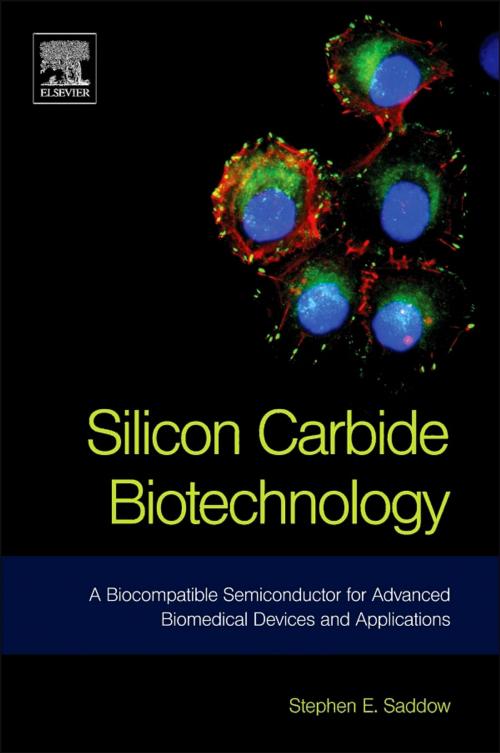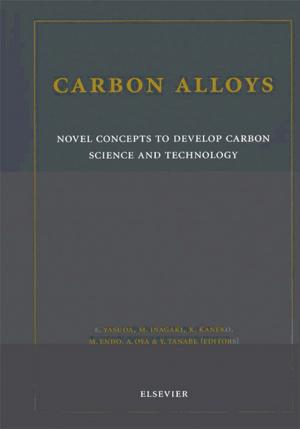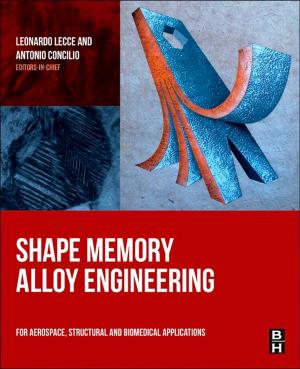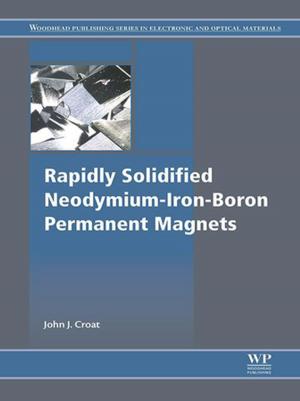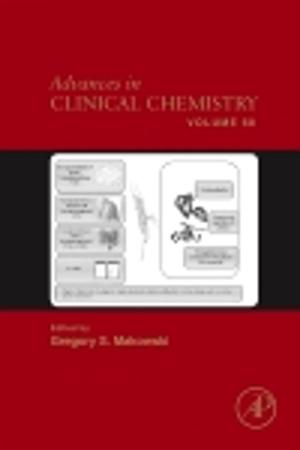Silicon Carbide Biotechnology
A Biocompatible Semiconductor for Advanced Biomedical Devices and Applications
Nonfiction, Science & Nature, Technology, Material Science, Science, Biological Sciences, Biotechnology| Author: | ISBN: | 9780123859075 | |
| Publisher: | Elsevier Science | Publication: | November 14, 2011 |
| Imprint: | Elsevier Science | Language: | English |
| Author: | |
| ISBN: | 9780123859075 |
| Publisher: | Elsevier Science |
| Publication: | November 14, 2011 |
| Imprint: | Elsevier Science |
| Language: | English |
Silicon Carbide (SiC) is a wide-band-gap semiconductor biocompatible material that has the potential to advance advanced biomedical applications. SiC devices offer higher power densities and lower energy losses, enabling lighter, more compact and higher efficiency products for biocompatible and long-term in vivo applications ranging from heart stent coatings and bone implant scaffolds to neurological implants and sensors.
The main problem facing the medical community today is the lack of biocompatible materials that are also capable of electronic operation. Such devices are currently implemented using silicon technology, which either has to be hermetically sealed so it cannot interact with the body or the material is only stable in vivo for short periods of time.
For long term use (permanent implanted devices such as glucose sensors, brain-machine-interface devices, smart bone and organ implants) a more robust material that the body does not recognize and reject as a foreign (i.e., not organic) material is needed. Silicon Carbide has been proven to be just such a material and will open up a whole new host of fields by allowing the development of advanced biomedical devices never before possible for long-term use in vivo.
This book not only provides the materials and biomedical engineering communities with a seminal reference book on SiC that they can use to further develop the technology, it also provides a technology resource for medical doctors and practitioners who are hungry to identify and implement advanced engineering solutions to their everyday medical problems that currently lack long term, cost effective solutions.
- Discusses Silicon Carbide biomedical materials and technology in terms of their properties, processing, characterization, and application, in one book, from leading professionals and scientists
- Critical assesses existing literature, patents and FDA approvals for clinical trials, enabling the rapid assimilation of important data from the current disparate sources and promoting the transition from technology research and development to clinical trials
- Explores long-term use and applications in vivo in devices and applications with advanced sensing and semiconducting properties, pointing to new product devekipment particularly within brain trauma, bone implants, sub-cutaneous sensors and advanced kidney dialysis devices
Silicon Carbide (SiC) is a wide-band-gap semiconductor biocompatible material that has the potential to advance advanced biomedical applications. SiC devices offer higher power densities and lower energy losses, enabling lighter, more compact and higher efficiency products for biocompatible and long-term in vivo applications ranging from heart stent coatings and bone implant scaffolds to neurological implants and sensors.
The main problem facing the medical community today is the lack of biocompatible materials that are also capable of electronic operation. Such devices are currently implemented using silicon technology, which either has to be hermetically sealed so it cannot interact with the body or the material is only stable in vivo for short periods of time.
For long term use (permanent implanted devices such as glucose sensors, brain-machine-interface devices, smart bone and organ implants) a more robust material that the body does not recognize and reject as a foreign (i.e., not organic) material is needed. Silicon Carbide has been proven to be just such a material and will open up a whole new host of fields by allowing the development of advanced biomedical devices never before possible for long-term use in vivo.
This book not only provides the materials and biomedical engineering communities with a seminal reference book on SiC that they can use to further develop the technology, it also provides a technology resource for medical doctors and practitioners who are hungry to identify and implement advanced engineering solutions to their everyday medical problems that currently lack long term, cost effective solutions.
- Discusses Silicon Carbide biomedical materials and technology in terms of their properties, processing, characterization, and application, in one book, from leading professionals and scientists
- Critical assesses existing literature, patents and FDA approvals for clinical trials, enabling the rapid assimilation of important data from the current disparate sources and promoting the transition from technology research and development to clinical trials
- Explores long-term use and applications in vivo in devices and applications with advanced sensing and semiconducting properties, pointing to new product devekipment particularly within brain trauma, bone implants, sub-cutaneous sensors and advanced kidney dialysis devices
